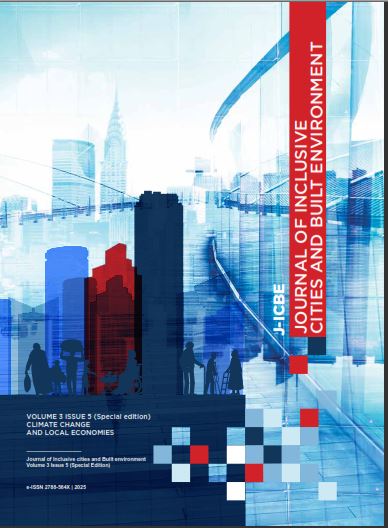Assessing the Impact of Soil Erosion using Geospatial Approach in Minna, Niger State, Nigeria
Keywords:
GIS, Remote Sensing, RULSE, Soil erosion, Soil Loss, VulnerabilityAbstract
Soil erosion remains a critical environmental issue, contributing significantly to landscape degradation, reduced soil fertility, and the deposition of unproductive materials on arable lands and waterways, often leading to the obstruction of rivers. This study employs Remote Sensing (RS) and Geographic Information Systems (GIS) techniques to model erosion and assess soil loss within the Minna catchment area, Niger State, Nigeria. The Revised Universal Soil Loss Equation (RUSLE) model was used for the estimation of soil loss, incorporating key factors such as rainfall erosivity (R), soil erodibility (K), slope length and steepness (LS), cover management (C), and support practice (P) factors. The results of the soil loss analysis were classified into three categories: low (<10 t/ha/year), moderate (10–20 t/ha/year), and high (>20 t/ha/year). Spatial analysis revealed that 59% of the area experienced low soil loss, 14% moderate loss, and 26% high loss. The findings highlight that slope length, slope steepness, and rainfall intensity are the predominant drivers of critical soil loss within the catchment. A soil vulnerability map was generated, delineating zones of low, moderate, and high erosion risk. Overall, the study area exhibited a relatively low vulnerability; however, specific wards such as Sabon-Gari and Shatta showed a higher concentration of moderate risk zones. Additionally, scattered high-risk areas were identified in wards such as Limawa B Central, Limawa A, Minna C, Minna S, Nassarawa A, Nassarawa C, and Tudun Wada South. Based on these findings, the study recommends immediate intervention in moderate and high-risk zones to prevent further degradation. It also calls upon relevant authorities to expedite policy formulation and decision-making processes aimed at mitigating the impacts of soil erosion across the catchment.



